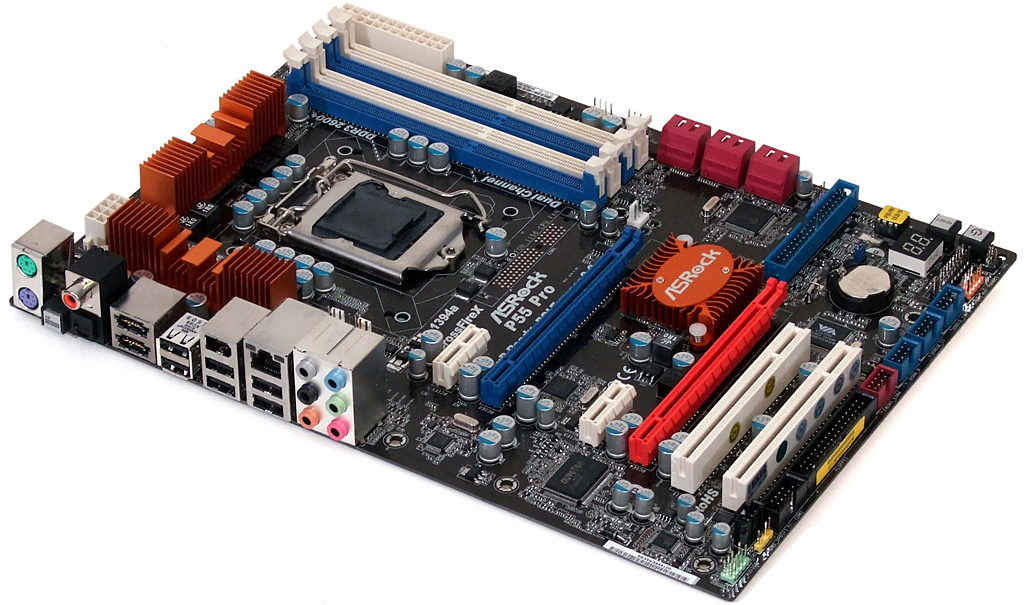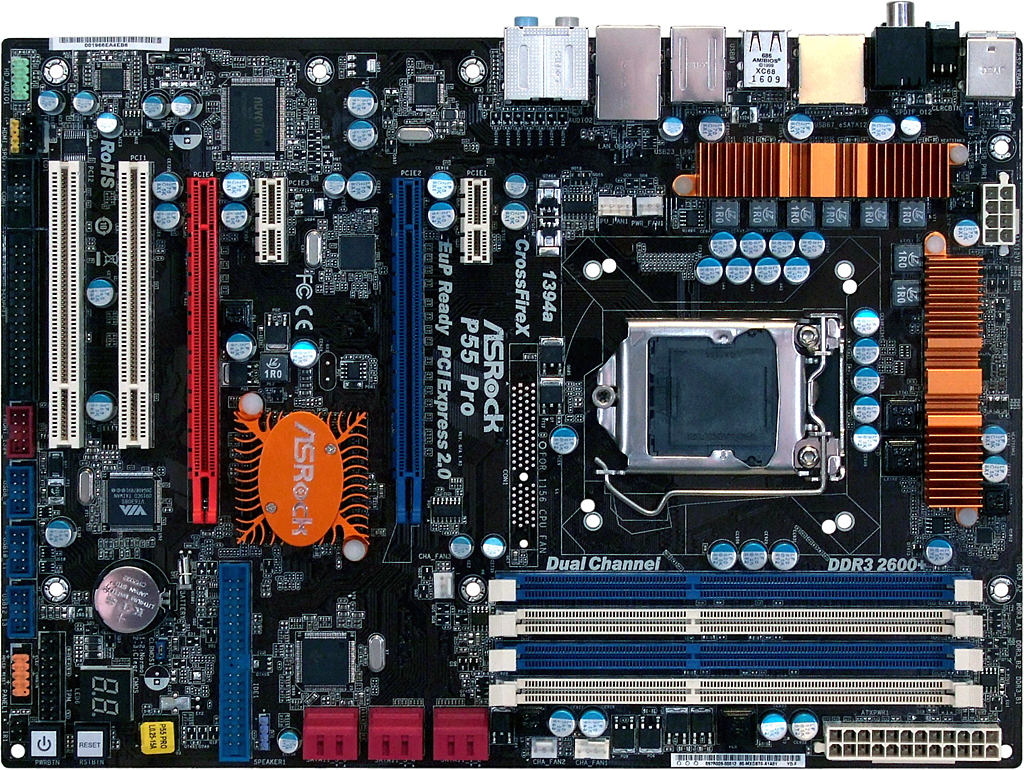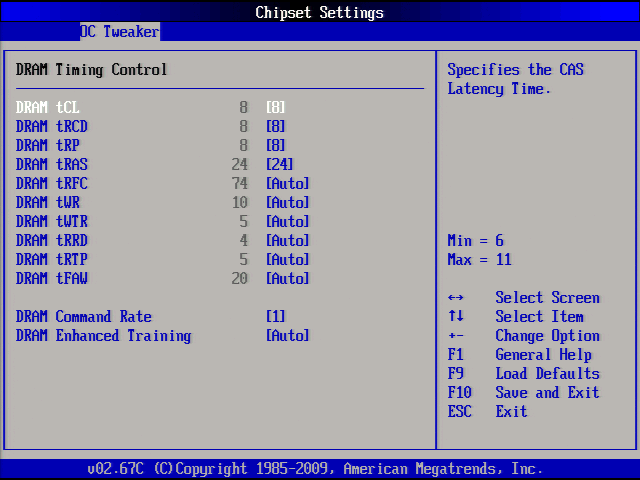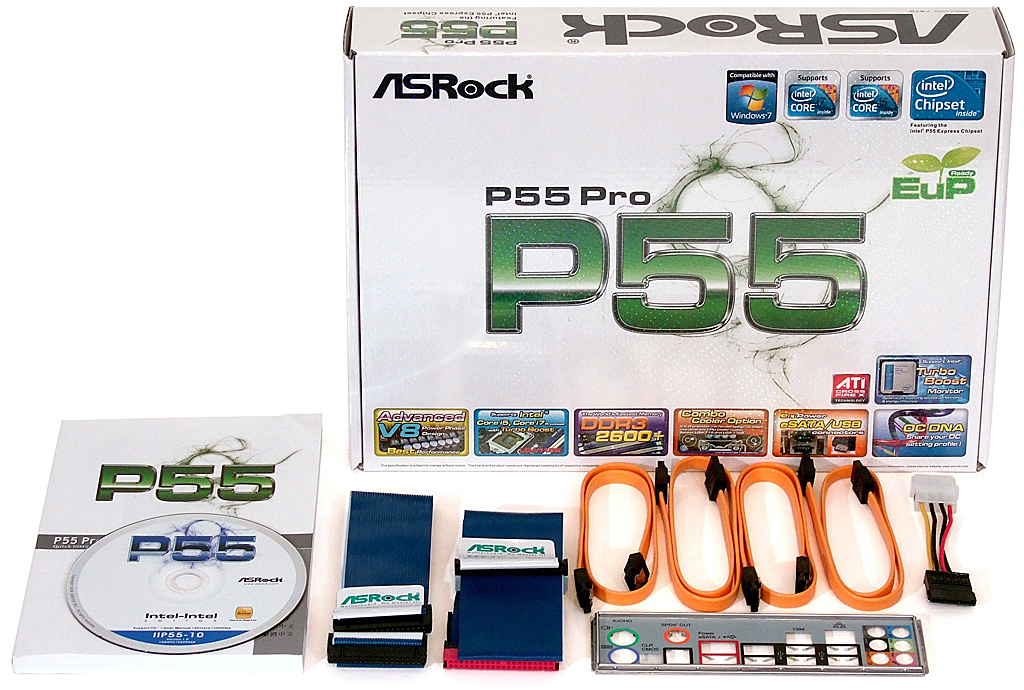P55 On A Budget: Five Core i5/i7 Motherboards For $100-$150
ASRock P55 Pro
For a mere $115, ASRock endows its P55 Pro with many of the features we expect to see on boards that are 30% more expensive, such as FireWire, dual eSATA, dual-format digital audio outputs, and a handy I/O panel CLR_CMOS button. Other enthusiast-friendly features include internal power and reset buttons and a Port 80 diagnostics display.
ASRock even spreads its six expansion slots across the standard seven positions, only leaving vacant the slot beneath the upper graphics card, a slot normally occupied by over-sized graphics cards that is otherwise left empty to assist GPU cooling. That means the six slots most people would potentially use are all available, providing two PCIe x1 and two legacy PCI interfaces.
The company moves forward while sacrificing none of its legendary backward-compatibility features, providing the floppy interface many Windows XP users need for RAID drivers, an Ultra ATA controller for legacy IDE devices, and a set of LGA 775 CPU cooler mounting holes. This makes this motherboard, in combination with a new CPU and RAM, a drop-in upgrade for the Core 2-based systems that so many budget-restricted performance enthusiasts still own. On the other hand, PCIe 2.0 x4 mode provided to the second x16-length slot through the P55 PCH leaves users of high-end CrossFire configurations in the cold.
Of course, the design isn’t perfect. Potential issues include a circuit board that’s around an inch short of reaching a third row of standoffs, something builders will notice immediately when trying to insert RAM into the forward-most DIMM slot. That crowding might be responsible for other nagging issues, such as a front-panel audio header in the bottom-rear corner and a floppy connector shoved beneath the lowest expansion slot. And while forward-facing SATA ports fit nicely under graphics cards, longer cards will hang past these far enough to make cable installation or removal difficult.
BIOS
ASRock’s OC Tweaker menu has all of the overclock settings most performance enthusiasts need, but few of the elaborate controls often used to gain an edge in overclocking competitions.

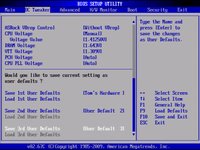
Vcore, Uncore, and DRAM voltage ceilings all exceed conventional safety levels, which is perfect for show-offs who don’t care how long their processors last. ASRock also includes voltage droop override to maintain consistent output during high CPU loads.
Get Tom's Hardware's best news and in-depth reviews, straight to your inbox.
We chose “easy” timings for our benchmarks, though the P55 Pro is capable of latencies as low as 6-3-3-9.
Accessories
A low price makes the inclusion of only four SATA cables acceptable, and these are the better-quality “latched” variety. Windows XP users who still need a floppy for installing RAID drives will also appreciate the included ribbon cable.
-
dirtmountain The Asrock P55 Pro is 16x-4x, not 8x-8x.Reply
http://www.asrock.com/mb/overview.asp?Model=P55%20Pro
http://www.newegg.com/Product/Product.aspx?Item=N82E16813157171
The Asrock P55 Extreme at $140 offers 8x-8x -
JeanLuc Good read but it really just confirms what a lot of us have known for a long time. Don't buy budget motherboards (MSI, ASrock, ECS) if you want to overclock and it's no coincidence that the boards from Gigabyte and Asus passed with flying colours as these companies clearly have proper testing procedures in place and quality assurance measures to avoid such issues.Reply -
evongugg Another great article from Tom's, letting us know about how one of these motherboards can burn your CPU. Never would have known without you.Reply
Might have burnt out a CPU and not know the cause.
-
Crydee How would P55 stack up against non P55s is what I wanted to see as well. See if the premium is worth it over the more budget friendly P55.Reply -
avatar_raq Unfortunately neither Gigabbyte nor ASUS boards offer the 8x8x PCI-e slots for multiple GPUs. I think it's better to wait for their premium brethren to fall below $150 before upgrading.Reply -
SchizoFrog For the extra $20 you can get the ASUS P7P55D PRO which is a much better board and offers the full spec for multi GPUs... However, I personally can only recommend what I would do myself and that is to wait. There are a lot of major PC spec changes over the next 6 months. So I am waiting for USB3 and SATA3 to make it to mainstream.Reply -
SchizoFrog For the extra $20 you can get the ASUS P7P55D PRO which is a much better board and offers the full spec for multi GPUs... However, I personally can only recommend what I would do myself and that is to wait. There are a lot of major PC spec changes over the next 6 months. So I am waiting for USB3 and SATA3 to make it to mainstream.Reply -
helms I doubt their quality assurance is as good as you think Jeanluc. Both Gigabyte and Asus make crap DDR3 controllers for socket 775 motherboards. I've tested a heap of DDR3 socket 775 boards from Asus and Gigabyte, the Asus P5Q3 in particular is causing a lot of problems. When paired with a quad core cpu (everything stock) and running 3 threads prime(blend) + furmark, the system would inevitably freeze in under 2hr's (usually within the 30 minutes mark, quite a bit less than 2hrs). In fact systems with those boards would freeze even during normal non PC intensive use such as browsing the internet. Running prime+furmark just forces it happen rather than waiting for it to freeze which is quite random during light use like word prcoessing. I doubt Asus even realizes that their P5Q3 is a faulty product and shouldn't have hit retail stores. They have been selling the P5Q3 for ages. They probably tested the board with a cheap dual core celeron and since it worked with that called it a day.Reply -
burnley14 JeanlucGood read but it really just confirms what a lot of us have known for a long time. Don't buy budget motherboards (MSI, ASrock, ECS) if you want to overclock and it's no coincidence that the boards from Gigabyte and Asus passed with flying colours as these companies clearly have proper testing procedures in place and quality assurance measures to avoid such issues.Reply
I think you're jumping to conclusions here. Tom's reviewed some boards a while back for the 1366 socket and gave ASRock first place for quality and value.
